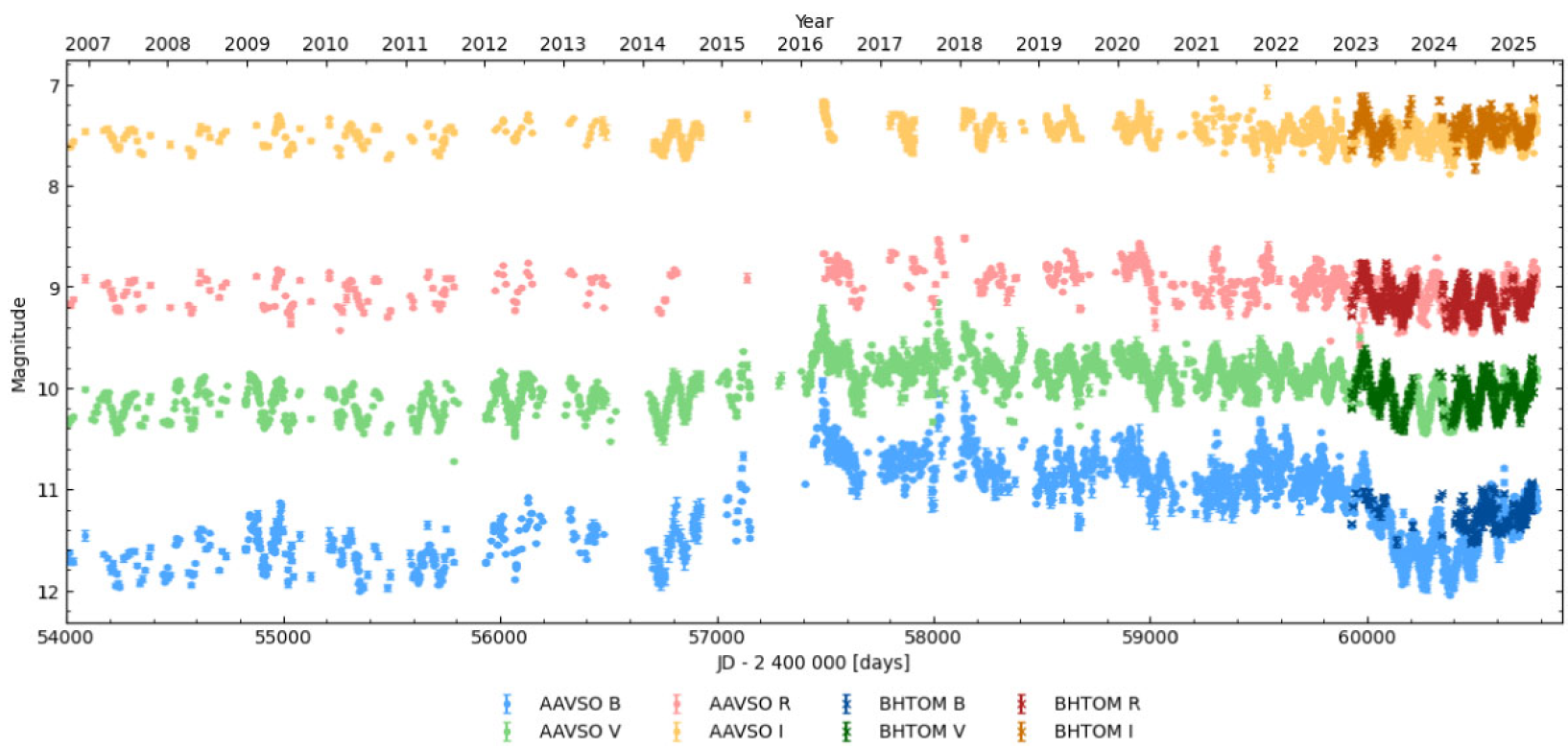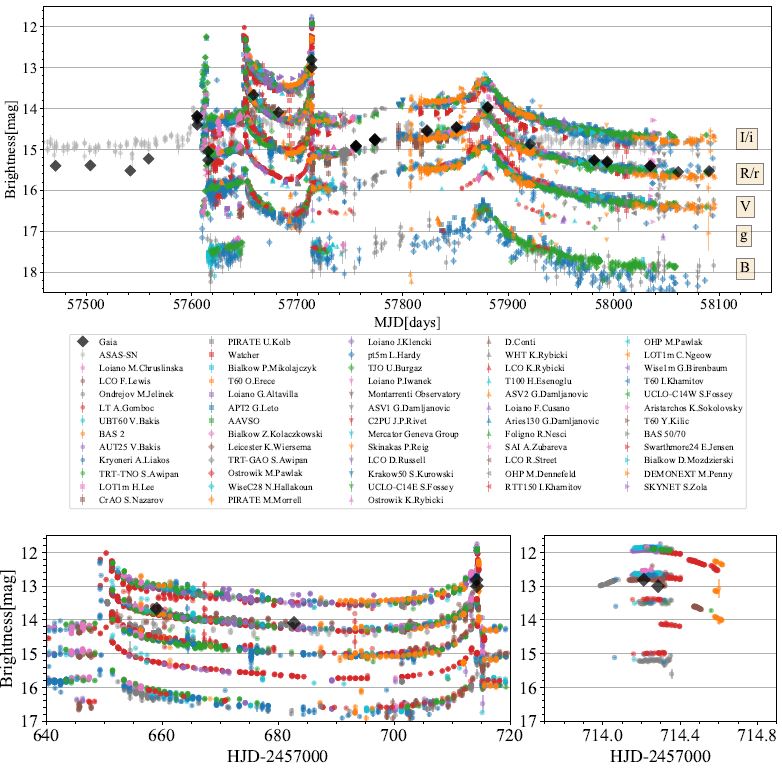Latest Publications
Is the symbiotic recurrent nova T CrB late? Recent photometric evolution and comparison with past pre-outburst behaviour
T CrB is a symbiotic recurrent nova that last erupted in 1946. Given its recurrence time-scale of approximately 80 yr, the next outburst is eagerly anticipated by the astronomical community. In this work, we analyse the optical light curves of T CrB, comparing recent photometric evolution with historical data to evaluate potential predictive indicators of no va eruptions. Although the 'superactive' phases preceding both the 1946 and anticipated eruptions are strikingly similar, the subsequent photometric behaviour differs. We find that the decline in brightness observed in 2023, interpreted by some as a 'pre-eruption dip', deviates from the deep minimum recorded prior to the 1946 event and does not reliably predict the eruption timing. Recent photometric and spectroscopic observations indicate that the system is returning to a high-accretion state. Given this, an eruption may be imminent, even without distinct precursors. While the next eruption of T CrB will be a major scientific event, its expected peak brightness of V ∼2 mag highlights the importance of setting realistic public expectations for what will be a visually modest, yet astrophysically very significant, celestial event.
CoBiToM project – I. Contact binaries towards merging
Binary and multiple stellar systems are numerous in our solar neighbourhood with 80 per cent of the solar-type stars being members of systems with high order multiplicity. The Contact Binaries Towards Merging (CoBiToM) Project is a programme that focuses on contact binaries and multiple stellar systems, as a key for understanding stellar nature. The goal is to investigate stellar coalescence and merging processes, as the final state of stellar evolution of low-mass contact binary systems. Obtaining observational data of approximately 100 eclipsing binaries and multiple systems and more than 400 archival systems, the programme aspires to give insights for their physical and orbital parameters and their temporal variations, e.g. the orbital period ...
Discovery of five new eclipsing systems of W UMa type
The present work contains light curve, spectroscopic, and asteroseismic analyses for KIC 04851217 and KIC 10686876. These systems are detached eclipsing binaries hosting a pulsating component of δ Scuti type and have been observed with the unprecedented accuracy of the Kepler space telescope. Using ground-based spectroscopic observations, the spectral types of the primary components of the systems were estimated as A6V and A5V for KIC 04851217 and KIC 10686876, respectively, with an uncertainty of one subclass. The present spectral classification, together with literature radial velocity curves, were used to model the light curves of the systems and, therefore, to calculate the absolute parameters of their ...
Full orbital solution for the binary system in the northern Galactic disc microlensing event Gaia16aye
Binary and multiple stellar systems are numerous in our solar neighbourhood with 80 per cent of the solar-type stars being members of systems with high order multiplicity. The Contact Binaries Towards Merging (CoBiToM) Project is a programme that focuses on contact binaries and multiple stellar systems, as a key for understanding stellar nature. The goal is to investigate stellar coalescence and merging processes, as the final state of stellar evolution of low-mass contact binary systems. Obtaining observational data of approximately 100 eclipsing binaries and multiple systems and more than 400 archival systems, the programme aspires to give insights for their physical and orbital parameters and their temporal variations, e.g. the orbital period ...
NELIOTA: Methods, statistics, and results for meteoroids impacting the Moon
There have been 79 lunar impact flashes observed with the 1.2 m Kryoneri telescope in Greece. The masses of the meteoroids range between 0.7 g and 8 kg, and their respective sizes between 1 and 20 cm, depending on their assumed density, impact velocity, and luminous efficiency. We find a strong correlation between the observed magnitudes ...





